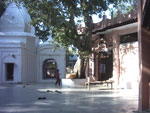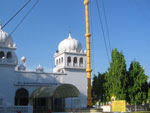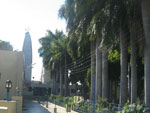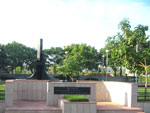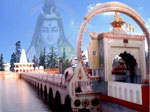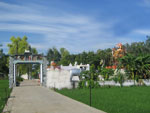Bathinda or Bhatinda, named after the Bhati Rajput kings, is one of the oldest cities in Punjab, India and the current administrative headquarters of Bathinda District. It is situated in north-western India in the Malwa (Punjab) Region, 225 km west of the capital city of Chandigarh. Bathinda is nicknamed the city of Lakes and was once known as Tabar-e-Hind(or Tabarhindh), meaning the Gateway to India. The first empress of India, Razia Sultan was imprisoned in the Qila Mubarak fort in Bathinda.
Bathinda is home to two modern thermal power plants, Guru Nanak Dev Thermal Plant in the city and the other one, Guru Hargobind Thermal Plant at Lehra Mohabbat. It is also home to a fertilizer plant, a large oil refinery, a Zoo, and the historic Qila Mubarak fort. Bathinda is one of the biggest food grain and cotton markets in northern India, and the area around Bathinda has become a large grape growing area. It is one of the leading cities in Punjab for education.
Bathinda has a rich religious and cultural heritage. There are a number places worth visiting in and around the city. Many of them are deeply associated with various religious beliefs.
Transport
Places to See:
Gurudwara Damdama Sahib
Damdama Sahib is one of the Five Takhts or Seat of Temporal Authority of Sikhism. It has been built at the site where Guru Gobind Singh, the tenth Sikh Guru, prepared the full version of the Sikh Scriptures, called Sri Guru Granth Sahib, in 1705. Located in village of Talwandi Sabo, 28 km to the southeast of Bathinda, the gurdwara was officially recognized as the Fifth Takht of Sikkhism, on November 18, 1966.
Qila Mubarak
This is an oldest and highest small brick monument.3. Lakhi Jungle
Bahia Fort
This was built in 1930 in front of the main Fort by S. Balwant Singh Sidhu belong to a group of 22 villages, so called Bahia Sahib. It was as official residence of armed forces of Maharaja Bhupinder Singh of Patiala State . Now it has been converted into a Four Star Hotel.
This is situated 15 km away from Bathinda and on the way to Mukatsar. A forest having old Gurudwara enjoyed the touches of Shri Guru Nanak Dev who recited one lakh holy Paths of Shri Japuji Sahib.Therefore it was called Lakhi Jungle. Tenth Sikh Guru , Guru Gobind Singh also visited this place.
Rose Garden
This garden boasts of large number of varieties of Roses. It is very near the city and is visited by large number of people on weekends. The 10-acre (40,000 m2) garden is located close to Thermal Plant. It has a vast variety of rose plants and is a good picnic spot.
Zoological garden
It is a plant nursery of the forest department located approximately 10 km away from the Cantonment and is a popular picnic spot. This place is a small zoo in the midst of a small forest.
Chetak Park
A beautiful garden built in Bathinda Cantonment is popular among children's and others. It has a lake and boating facility.
Mazaar of Peer Haji Rattan
It is one of the most revered place of worship in the city.
Deer Park Bir Talab Bathinda
The Deer Park Bir Talab Bathinda is situated in a notified Protected Forests about 8 Km from the city of Bathinda. The total area of the Deer Park is 32 acres. There are 15 animal enclosures in this Deer Park. The zoo exhibits Sambar, Blue Bull, Hog Deer, Spotted Deer, Black Buck and various species of birds such as Parakeets, Cockteals, Partridges, Doves, Ducks etc. Since the Deer Park is located in Protected Forests, the visit to the zoo gives a thrilling experience to the visitors.
Muktsar















